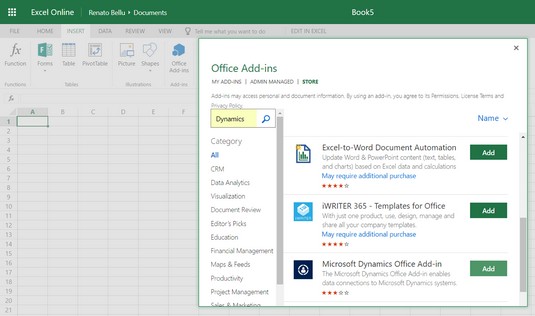Find Out What Add-ins Are Running Microsoft Word Mac
- Find Out What Add-ins Are Running Microsoft Word Mac Version
- Find Out What Add-ins Are Running Microsoft Word Mac Download
To see how your add-in will run in Office on iOS, you can sideload your add-in's manifest onto an iPad using iTunes, or sideload your add-in's manifest directly in Office on Mac. This action won't enable you to set breakpoints and debug your add-in's code while it's running, but you can see how it behaves and verify that the UI is usable and rendering appropriately.
Apr 18, 2018 To determine whether any COM add-ins are loaded in Microsoft Word 2002 or in Microsoft Office Word 2003, follow these steps: On the Tools menu, click Customize. On the Commands tab in the Customize dialog box, click Tools. In the Commands list, click the COM Add-Ins command, and then drag the COM Add-Ins command to a toolbar. Go to the HD/Applications folder - the Microsoft Office folder will reveal only base version, but if you Open the Microsoft Office folder you can either: Use Columns view in the Finder window & select an app's icon. Complete version info will display in the Preview column,. Right-click the app icon & select Get Info.
Prerequisites for Office on iOS
A Windows or Mac computer with iTunes installed.
An iPad running iOS 8.2 or later with Excel on iPad installed, and a sync cable.
The manifest .xml file for the add-in you want to test.
Prerequisites for Office on Mac

A Mac running OS X v10.10 'Yosemite' or later with Office on Mac installed.
Word on Mac version 15.18 (160109).
Excel on Mac version 15.19 (160206).
PowerPoint on Mac version 15.24 (160614)
The manifest .xml file for the add-in you want to test.
Sideload an add-in on Excel or Word on iPad
Use a sync cable to connect your iPad to your computer. If you're connecting the iPad to your computer for the first time, you'll be prompted with Trust This Computer?. Choose Trust to continue.
In iTunes, choose the iPad icon below the menu bar.
Under Settings on the left side of iTunes, choose Apps.
On the right side of iTunes, scroll down to File Sharing, and then choose Excel or Word in the Add-ins column.
At the bottom of the Excel or Word Documents column, choose Add File, and then select the manifest .xml file of the add-in you want to sideload.
Open the Excel or Word app on your iPad. If the Excel or Word app is already running, choose the Home button, and then close and restart the app.
Open a document.
Choose Add-ins on the Insert tab. Your sideloaded add-in is available to insert under the Developer heading in the Add-ins UI.
Sideload an add-in in Office on Mac
Note
To sideload an Outlook add-in on Mac, see Sideload Outlook add-ins for testing.
Open Terminal and go to one of the following folders where you'll save your add-in's manifest file. If the
weffolder doesn't exist on your computer, create it.Find duplicate numbers in microsoft 2011 for mac from disc. But here's what the end of support means for you:.You'll no longer receive Office for Mac 2011 software updates from Microsoft Update.You'll no longer receive security updates.
- For Word:
/Users/<username>/Library/Containers/com.microsoft.Word/Data/Documents/wef - For Excel:
/Users/<username>/Library/Containers/com.microsoft.Excel/Data/Documents/wef - For PowerPoint:
/Users/<username>/Library/Containers/com.microsoft.Powerpoint/Data/Documents/wef
- For Word:
Open the folder in Finder using the command
open .(including the period or dot). Copy your add-in's manifest file to this folder.Open Word, and then open a document. Restart Word if it's already running.
In Word, choose Insert > Add-ins > My Add-ins (drop-down menu), and then choose your add-in.
Important
Sideloaded add-ins will not show up in the My Add-ins dialog box. They are only visible within the drop-down menu (small down-arrow to the right of My Add-ins on the Insert tab). Sideloaded add-ins are listed under the Developer Add-ins heading in this menu.
Verify that your add-in is displayed in Word.
Remove a sideloaded add-in
You can remove a previously sideloaded add-in by clearing the Office cache on your computer. Details on how to clear the cache for each platform and host can be found in the article Clear the Office cache.
See also
-->This section contains guidance about testing, debugging, and troubleshooting issues with Office Add-ins.
Sideload an Office Add-in for testing
You can use sideloading to install an Office Add-in for testing without having to first put it in an add-in catalog. The procedure for sideloading an add-in varies by platform, and in some cases, by product as well. The following articles each describe how to sideload Office Add-ins on a specific platform or within a specific product:
Debug an Office Add-in
The procedure for debugging an Office Add-in varies by platform as well. Each of the following articles describes how to debug Office Add-ins on a specific platform:
Validate an Office Add-in manifest
For information about how to validate the manifest file that describes your Office Add-in and troubleshoot issues with the manifest file, see Validate and troubleshoot issues with your manifest.
Find Out What Add-ins Are Running Microsoft Word Mac Version
Troubleshoot user errors
Find Out What Add-ins Are Running Microsoft Word Mac Download
For information about how to resolve common issues that users may encounter with your Office Add-in, see Troubleshoot user errors with Office Add-ins.